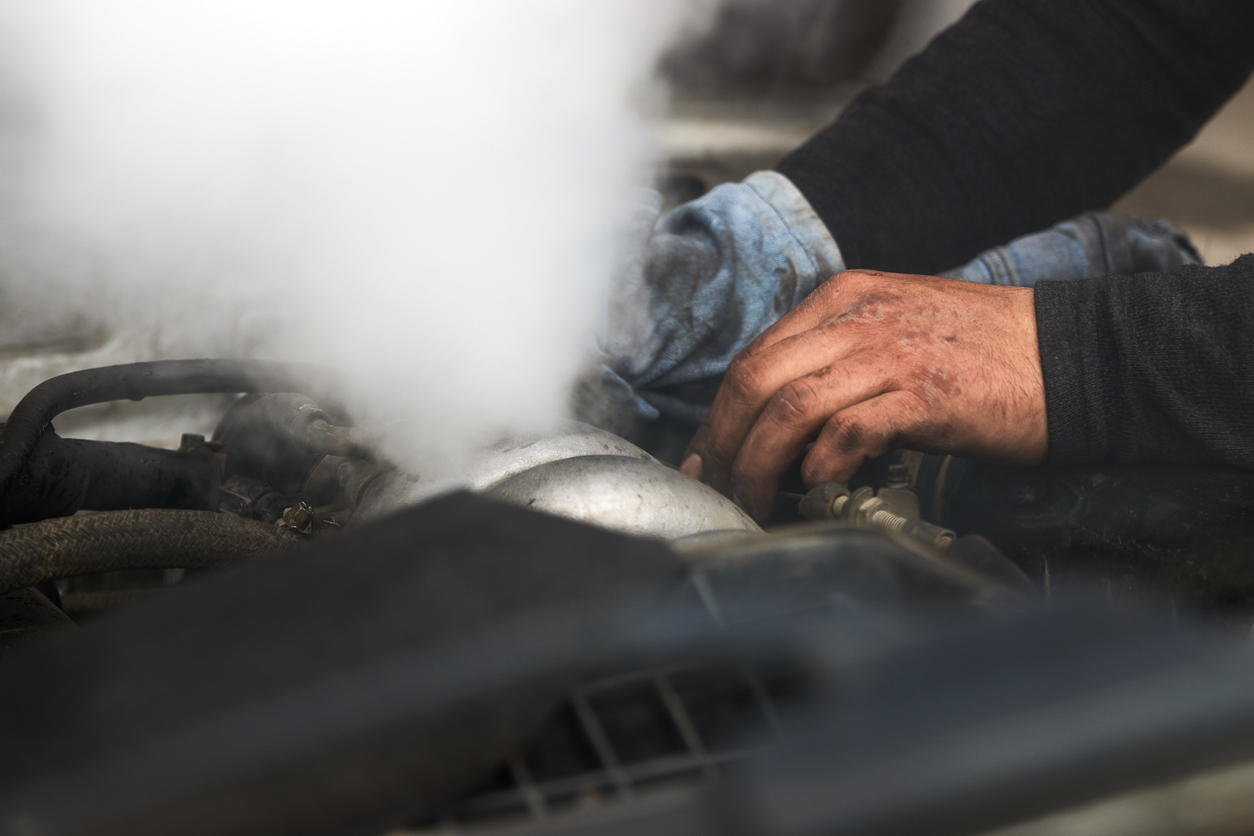Body parts
Available parts: 329.586

Content
1. Why does the engine overheat?
2. What motorists should do if their engine overheats
3. Engine overheating – these parts on the car may be defective
To prevent combustion engines from getting too hot during operation, a sophisticated cooling system provides cooling. However, if parts of the cooling system are defective or there is no cooling water, the engine can overheat. In our guide on the subject of engine overheating, we provide many tips and answer all questions.
Engines as diesel or petrol engines generate a lot of heat through combustion, which must be dissipated. Every modern vehicle is equipped with a cooling system to cool the engine, as the cooling effect provided by air alone is not sufficient. Instead, cooling water is pumped through the engine and to the radiator in a cooling circuit to dissipate the heat generated.
The cooling system in a car consists of numerous components. These include a fan, for example, which ensures that air flows through the radiator even when the car is stationary, so that heat is reliably dissipated. A thermostat for controlling the cooling circuit, the coolant pump and other components are also part of the cooling circuit. If a part is defective, the engine can overheat.
Numerous causes can be responsible for the engine overheating. In addition to problems with the components of the cooling system, a lack of cooling water can also be the source of the evil. Therefore, the level of the cooling water should be checked regularly.
If the temperature of the engine rises, the vehicle alerts the driver to the problem. This is to prevent damage to the car such as engine damage due to engine overheating.
One of the clearest signs of an unacceptable temperature rise is the illumination of the red coolant temperature warning light. At the same time, the coolant temperature display may show a high value if the engine has overheated. Depending on the model, an increased engine temperature is also indicated in the display of the on-board computer.
If the water temperature display shows alarming values, or if the red warning light in the cockpit even lights up, quick action is called for. The driver should stop the vehicle at the next possible stop and switch off the engine.
After the stop, the bonnet can be opened to provide cooling. It may take a while for the engine to cool down, but under no circumstances should cold water be poured over the engine block.
The radiator cap or expansion tank cap should not be opened without special precautions, as the cooling system may be under pressure and hot cooling water may escape. Instead, a suitable cloth should be used to open the cap after an appropriate cooling period. If cooling water is missing, it can be replenished accordingly.
After the engine has cooled down sufficiently, it is often possible to drive the vehicle to the nearest workshop. However, you should keep an eye on the temperature gauge. If the engine overheats again, the car should be towed away. The workshop can find out the cause of the engine overheating and initiate appropriate repairs.
If the engine overheats and the car is still moved, this can cause considerable damage. This can affect the cylinder head or the engine block. It is not uncommon for the result to be a major engine failure, the repair of which incurs considerable costs and requires special tools. Often, even a replacement engine is due.
If engine overheating occurs, various components of the cooling system are possible causes. A lack of coolant is often caused by leaks in hoses or connections. A defective cylinder head gasket or a cracked expansion tank can also be responsible for the gradual loss of coolant.
Defective water pumps, damaged radiators or broken radiator fans are also possible reasons for overheating. All parts of the radiator circuit and many engine parts are available second-hand in original quality at Autoparts24. In addition, you can easily compare numerous offers from different car recycling companies.
Body parts
Available parts: 329.586

Breakes / wheels
Available parts: 277.927

Chassis / shafts
Available parts: 248.760

Cooling system
Available parts: 81.417

Eletronic parts
Available parts: 448.296

Engine / engineparts
Available parts: 333.656

Exhaust system
Available parts: 94.557

Fuel system
Available parts: 45.836

Gearbox / transmission
Available parts: 239.637

Heating / a/c
Available parts: 192.415

Interior
Available parts: 382.233

Lights
Available parts: 121.191

Locks / locking system
Available parts: 158.864

Mirrors
Available parts: 67.441

Radio / audio / infotainment
Available parts: 70.866

Steering
Available parts: 145.365

Switches / contacts
Available parts: 249.681

Tools / equipment
Available parts: 11.901

Wipers
Available parts: 222.762
